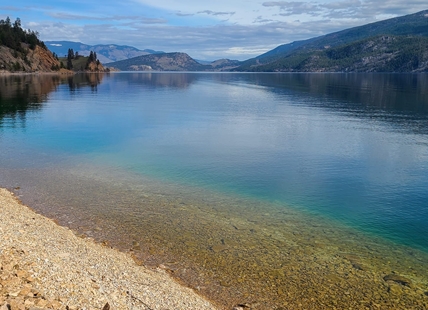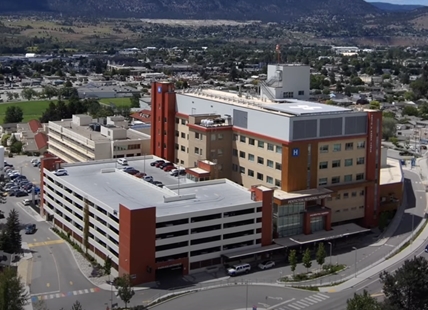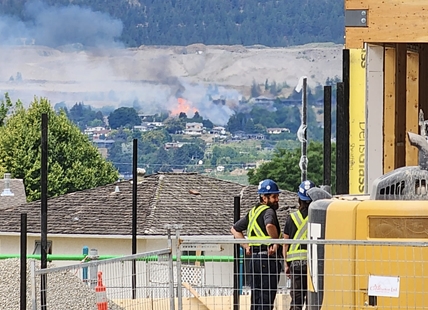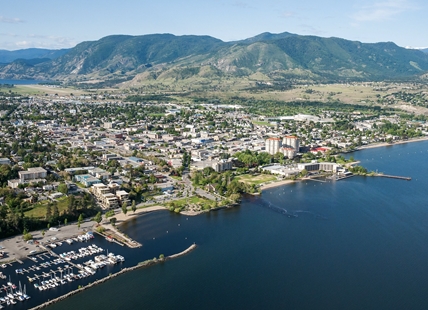The secret to Kalamalka Lake's gorgeous colours
Every summer, Kalamalka Lake shines with a bright green-blue hue, but have you ever wondered why? The key is calcium carbonate, a white, odorless substance found commonly in rocks. The blue colour is reflected off calcium carbonate crystals, he said. When water evaporates, these...

Every summer, Kalamalka Lake shines with a bright green-blue hue, but have you ever wondered why?
The key is calcium carbonate, a white, odorless substance found commonly in rocks.
The blue colour is reflected off calcium carbonate crystals, he said. When water evaporates, these salts are left behind so the lake appears brighter in colour in the summer with warmer temperatures.
“What causes the colour change is the precipitation of calcium carbonate and the colour depends on the size of the crystals,” said Jeff Curtis, earth and environmental science professor at UBC Okanagan.
READ MORE: Kamloops grasslands home to mysterious salt water ponds unique to B.C.'s southern interior
Recently, residents snapped photos of Kalamalka Lake looking a little more vibrant as temperatures begin to warm up.
“You know how when you get lime scale on your kettle and lime scale on your shower head and so forth? That’s from heating water that has calcium carbonate in it, so it precipitates when you warm things up,” Curtis said. Eventually the crystals become less soluble.
This process also happens in other lakes like Wood Lake but it has more algae in it so its appearance is muted, he said. Over the years, he has noticed the “whiting” phenomenon on Wood Lake, meaning it took on a blueish hue.
Wood Lake is more nutrient rich than Kalamalka Lake and it acts like a filter for the other lake, he said. That's the real key to the colours, the clearness and lack of algae in Kalamalka Lake.
"Lots of times times when you have lakes connected in a chain like that you can see the removal of stuff from water in sort of the upper end lakes," Curtis said. "Especially those things that are a component of algae."
Algae components will typically die in Wood Lake and become the lake's bottom sediment so they won't be transferred to Kalamalka Lake.
READ MORE: The freshwater 'coral' this B.C. lake is famous for is not actually coral
Kalamalka Lake also has a decent amount of calcium carbonate in the lake and there’s not too much else competing for light in it.
There’s plenty of blue-green lakes in B.C. Some of the most notable ones include Emerald Lake and Lake O'Hara in Yoho National Park and Pavilion Lake near Lillooet.
“It’s not a super, super, rare phenomenon. These kinds of events would happen in some of the Great Lakes and a number of places I’ve studied elsewhere,” Curtis said.
With climate change and urbanization, algae thrives in warm waters that are nutrient rich, meaning Kalamalka Lake may begin to look more like Wood Lake, he said.
READ MORE: From Kelowna to Kamloops, Interior lakes hold underwater mysteries
To contact a reporter for this story, email Carli Berry or call 250-864-7494 or email the editor. You can also submit photos, videos or news tips to the newsroom and be entered to win a monthly prize draw.
We welcome your comments and opinions on our stories but play nice. We won't censor or delete comments unless they contain off-topic statements or links, unnecessary vulgarity, false facts, spam or obviously fake profiles. If you have any concerns about what you see in comments, email the editor in the link above.

 Valandos
Valandos 















